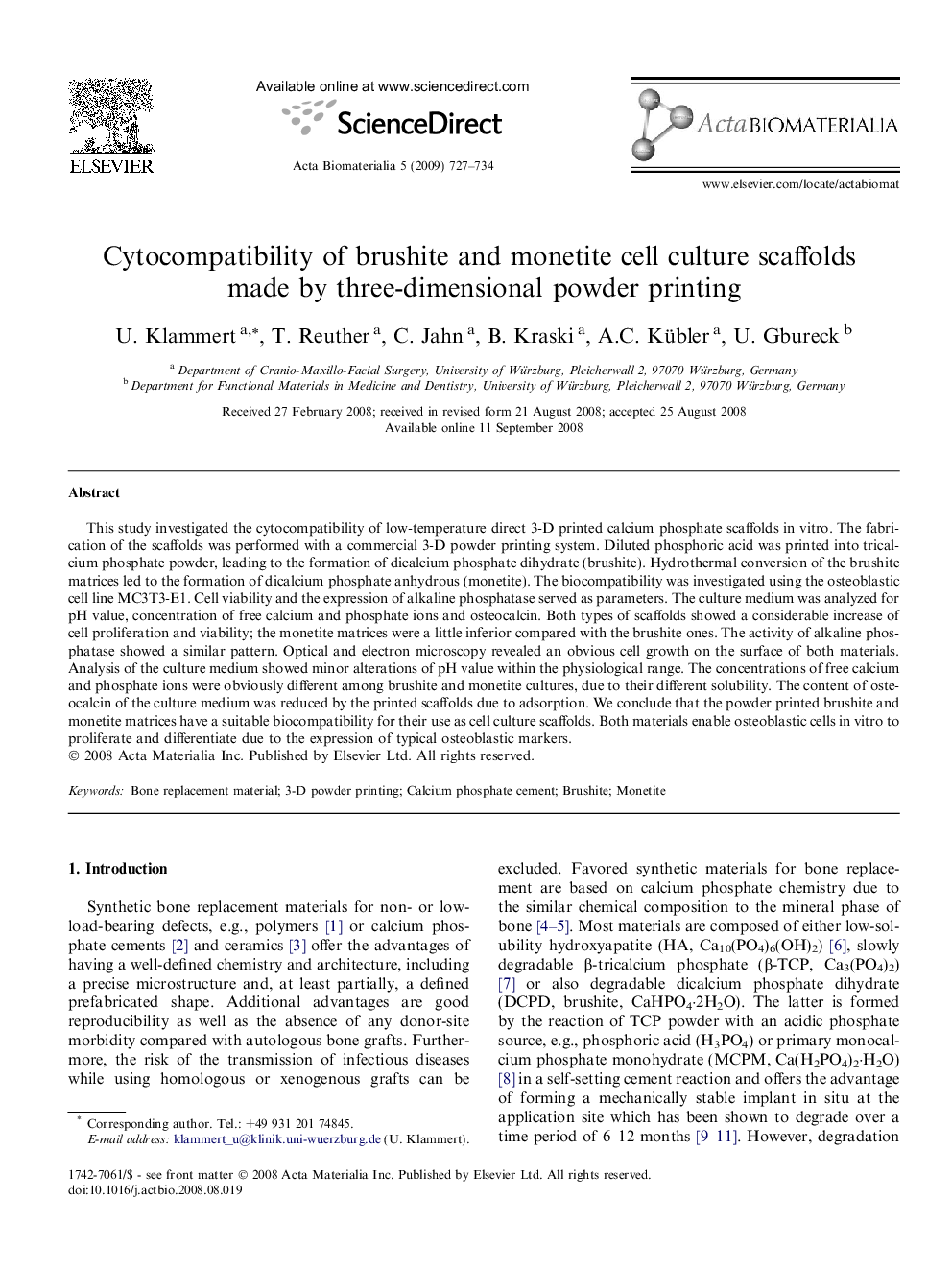| Article ID | Journal | Published Year | Pages | File Type |
|---|---|---|---|---|
| 2613 | Acta Biomaterialia | 2009 | 8 Pages |
This study investigated the cytocompatibility of low-temperature direct 3-D printed calcium phosphate scaffolds in vitro. The fabrication of the scaffolds was performed with a commercial 3-D powder printing system. Diluted phosphoric acid was printed into tricalcium phosphate powder, leading to the formation of dicalcium phosphate dihydrate (brushite). Hydrothermal conversion of the brushite matrices led to the formation of dicalcium phosphate anhydrous (monetite). The biocompatibility was investigated using the osteoblastic cell line MC3T3-E1. Cell viability and the expression of alkaline phosphatase served as parameters. The culture medium was analyzed for pH value, concentration of free calcium and phosphate ions and osteocalcin. Both types of scaffolds showed a considerable increase of cell proliferation and viability; the monetite matrices were a little inferior compared with the brushite ones. The activity of alkaline phosphatase showed a similar pattern. Optical and electron microscopy revealed an obvious cell growth on the surface of both materials. Analysis of the culture medium showed minor alterations of pH value within the physiological range. The concentrations of free calcium and phosphate ions were obviously different among brushite and monetite cultures, due to their different solubility. The content of osteocalcin of the culture medium was reduced by the printed scaffolds due to adsorption. We conclude that the powder printed brushite and monetite matrices have a suitable biocompatibility for their use as cell culture scaffolds. Both materials enable osteoblastic cells in vitro to proliferate and differentiate due to the expression of typical osteoblastic markers.
